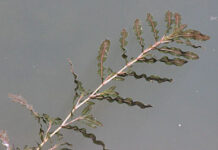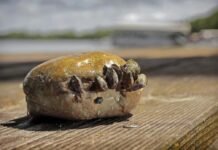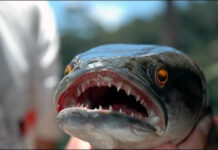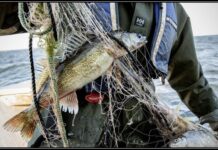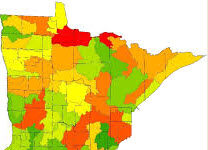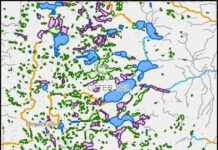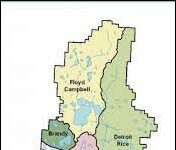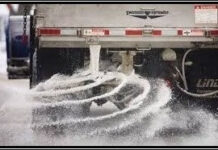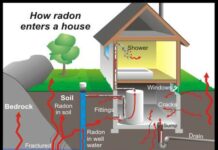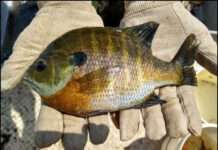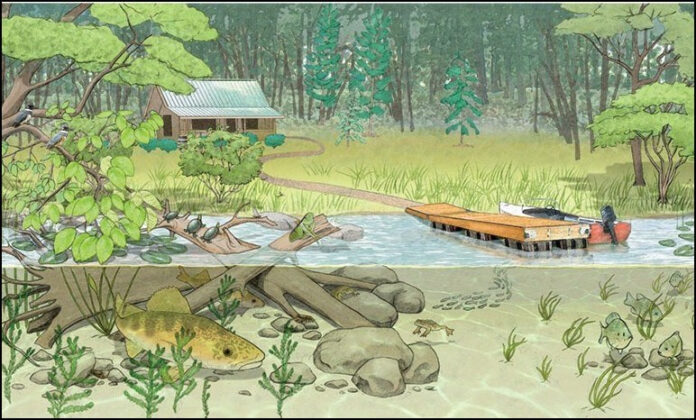Healthy lakes are like Mom, puppies and apple pie – we all love and adore them.
So, of course, your lake deserves TLC. There are steps you can take to make
sure your cabin property is lake-friendly. 1.Let fallen logs lie to create habitat for
sunning turtles above water and aquatic life beneath. 2.Rocky bottoms can serve
as spawning grounds for fish, such as bass, perch and crappie. 3.Avoid creating
a large beach area. If you must have a beach, keep it small. Instead, focus on
creating a shoreline buffer, a vegetative zone along the shore. The presence of
native plants along the shore buffers or protects the lake by keeping erosion at
bay and by filtering contaminated water and/or excessive nutrients that would
otherwise enter the water body. A buffer that extends 25-50 feet from shore is
ideal, but even 10-15 feet is beneficial. 4.Trees along the shore provide shade for
aquatic life, stabilize the shoreline and filter runoff water before it seeps into the
lake. 5.Eliminate paths that run directly from the cabin to the waterfront. Curvy
paths allow water to soak in, thereby increasing soil stability. To prevent the
path’s soil from compacting, cover it with shredded bark to help the ground retain
moisture. 6.If you must keep a mowed lawn, consider limiting it to the area
around your cabin. Apply fertilizers and pesticides sparingly. 7.To slow
stormwater runoff, consider pervious driveways and paths. And use gutters and
rain barrels for the cabin, garages and major outbuildings. 8.Maintain a properly
functioning septic system that will not leach contaminants into your lake. 9.Clean
your boat, motor and gear immediately after taking them out of a body of water,
so you don’t spread invasive species to other water bodies. 10. Maintain or
replace your old 2-stroke boat motor to prevent leakage. (About 30% of all gas
and oil used in these engines ends up in the water.) 11.Keep swimming areas
small, while allowing emergent plants to grow. Species like bulrushes and reeds
absorb the erosive energy of incoming waves. 12. Consider starting a lake
association! By gathering with your neighbors, there is strength in numbers.
Together, you can monitor lake quality, help prevent the incursion of invasive
species and more!
Protect Your Lake Home with Limited Lawn Care
If you own lakeside property, keep in mind that anything you put on your lawn will
probably end up in the lake. Because of this, you should try to avoid using
fertilizer on the grass at your lake property. Fertilizer is full of things that help
plants and other things grow. This can be wonderful for the grass on your lawn,
but if the fertilizer gets in the lake, it can cause tiny plankton to grow as well.
Plankton are microscopic animals in the lake that use up oxygen when they
breathe, just like humans. If fertilizer gets into the lake, it can cause plankton to
grow at incredible rates. An overabundance of plankton will drain all the oxygen
from the lake. And, of course, oxygen is needed by fish and other animals in the
lake to survive. Fertilizer can also cause algae to grow and multiply, resulting in a
layer of gross, green and harmful or toxic slime. See also Building at the
Water’s Edge
ABOUT OUR AUTHOR Erik Bye is a graduate student at the University of
Minnesota – Duluth

